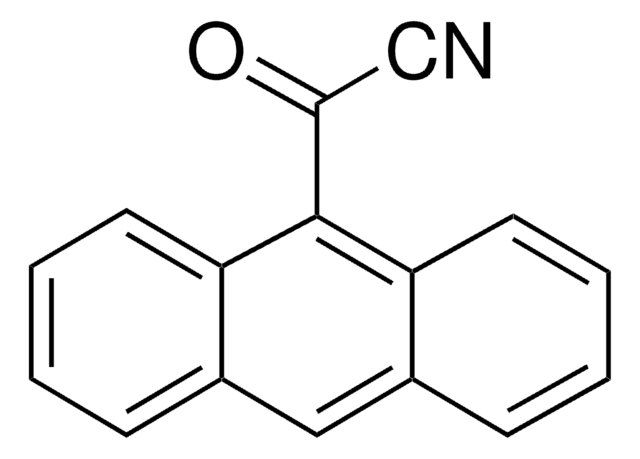15014
Ethanolamine
≥99%
Synonym(s):
2-Aminoethanol, 2-Aminoethyl alcohol, ETA, MEA, MEA 90, MEA-LCI, Monoethanolamine
About This Item
Recommended Products
vapor density
2.1 (vs air)
Quality Level
vapor pressure
0.2 mmHg ( 20 °C)
Assay
≥99%
form
liquid
autoignition temp.
1436 °F
expl. lim.
17 %
impurities
≤0.5% water (Karl Fischer)
ign. residue
≤0.05% (as SO4)
refractive index
n20/D 1.454 (lit.)
bp
170 °C (lit.)
69-70 °C/10 mmHg
mp
10-11 °C (lit.)
density
1.012 g/mL at 25 °C (lit.)
cation traces
Fe: ≤10 mg/kg
functional group
amine
hydroxyl
SMILES string
NCCO
InChI
1S/C2H7NO/c3-1-2-4/h4H,1-3H2
InChI key
HZAXFHJVJLSVMW-UHFFFAOYSA-N
Looking for similar products? Visit Product Comparison Guide
Application
- Catalytic performance and acidic analysis of chloroaluminate ionic liquid: Explores the effects of ethanolamine on the catalytic properties of ionic liquids in oil synthesis (Hu et al., 2024).
Other Notes
Signal Word
Danger
Hazard Statements
Precautionary Statements
Hazard Classifications
Acute Tox. 4 Dermal - Acute Tox. 4 Inhalation - Acute Tox. 4 Oral - Aquatic Chronic 3 - Eye Dam. 1 - Skin Corr. 1B - STOT SE 3
Target Organs
Respiratory system
Storage Class Code
8A - Combustible corrosive hazardous materials
WGK
WGK 2
Flash Point(F)
195.8 °F - Pensky-Martens closed cup
Flash Point(C)
91 °C - Pensky-Martens closed cup
Personal Protective Equipment
Regulatory Listings
Regulatory Listings are mainly provided for chemical products. Only limited information can be provided here for non-chemical products. No entry means none of the components are listed. It is the user’s obligation to ensure the safe and legal use of the product.
PDSCL
Deleterious substance
PRTR
Class I Designated Chemical Substances
FSL
Group 4: Flammable liquids
Type 3 petroleums
Hazardous rank III
Water soluble liquid
ISHL Indicated Name
Substances Subject to be Indicated Names
ISHL Notified Names
Substances Subject to be Notified Names
JAN Code
15014-25ML:4548173333694
15014-VAR:
15014-190KG:4548173248431
15014-1L:4548173248448
15014-BULK:
15014-100ML:4548173333687
15014-2.5L:4548173248455
15014-210KG:4548173248462
15014-25KG:4548173248479
15014-4X2.5L:4548173248486
15014-6X1L:4548173248493
Choose from one of the most recent versions:
Already Own This Product?
Find documentation for the products that you have recently purchased in the Document Library.
Customers Also Viewed
Our team of scientists has experience in all areas of research including Life Science, Material Science, Chemical Synthesis, Chromatography, Analytical and many others.
Contact Technical Service







